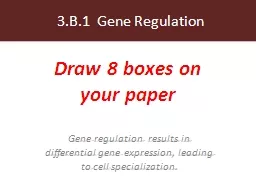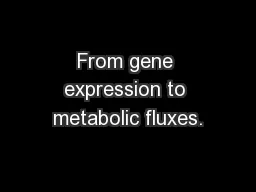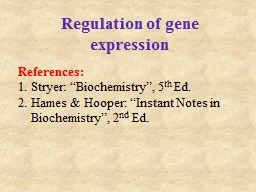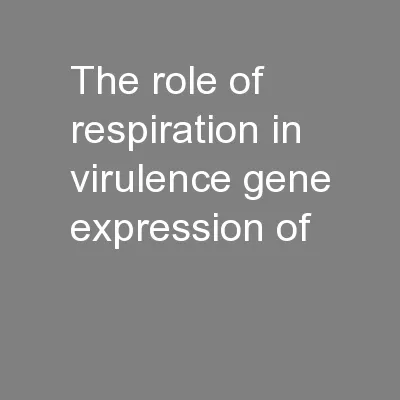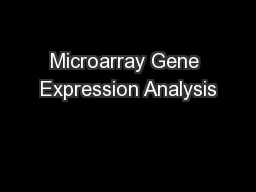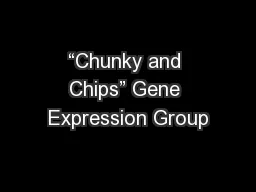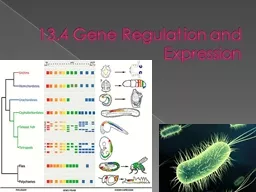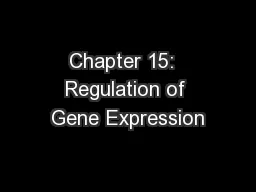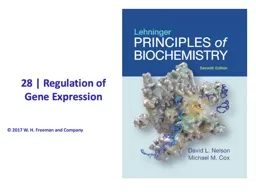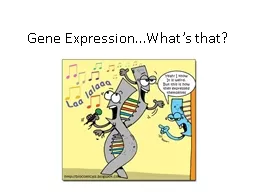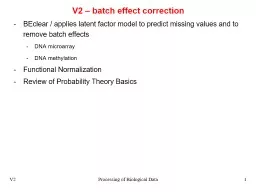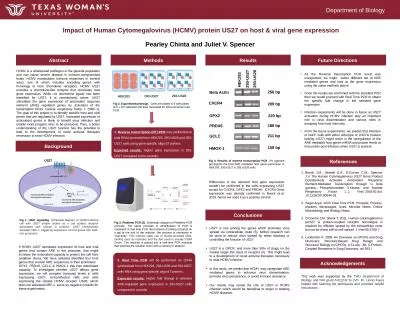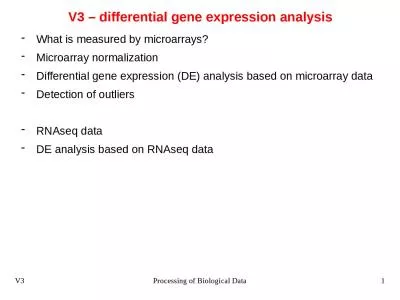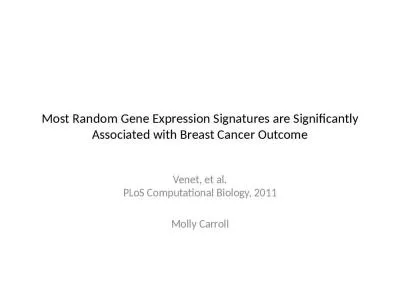PPT-3.B.1 Gene Regulation Gene regulation results in differential gene expression, leading
Author : laobeast | Published Date : 2020-06-17
Draw 8 boxes on your paper Gene regulation accounts for some of the phenotypic differences between organisms with similar genes 20052006 Gene regulation in bacteria
Presentation Embed Code
Download Presentation
Download Presentation The PPT/PDF document "3.B.1 Gene Regulation Gene regulation ..." is the property of its rightful owner. Permission is granted to download and print the materials on this website for personal, non-commercial use only, and to display it on your personal computer provided you do not modify the materials and that you retain all copyright notices contained in the materials. By downloading content from our website, you accept the terms of this agreement.
3.B.1 Gene Regulation Gene regulation results in differential gene expression, leading: Transcript
Download Rules Of Document
"3.B.1 Gene Regulation Gene regulation results in differential gene expression, leading"The content belongs to its owner. You may download and print it for personal use, without modification, and keep all copyright notices. By downloading, you agree to these terms.
Related Documents

